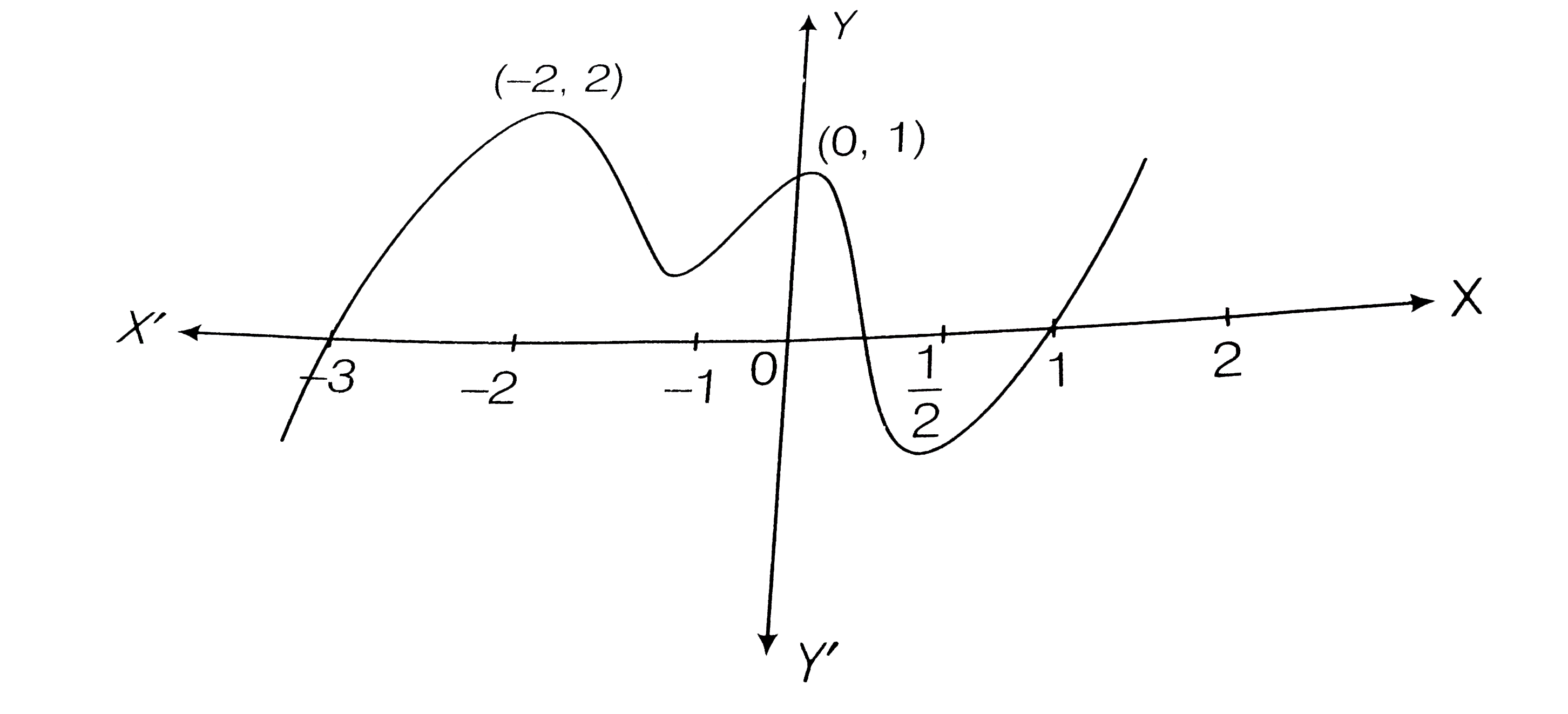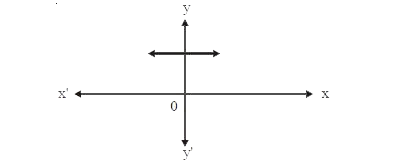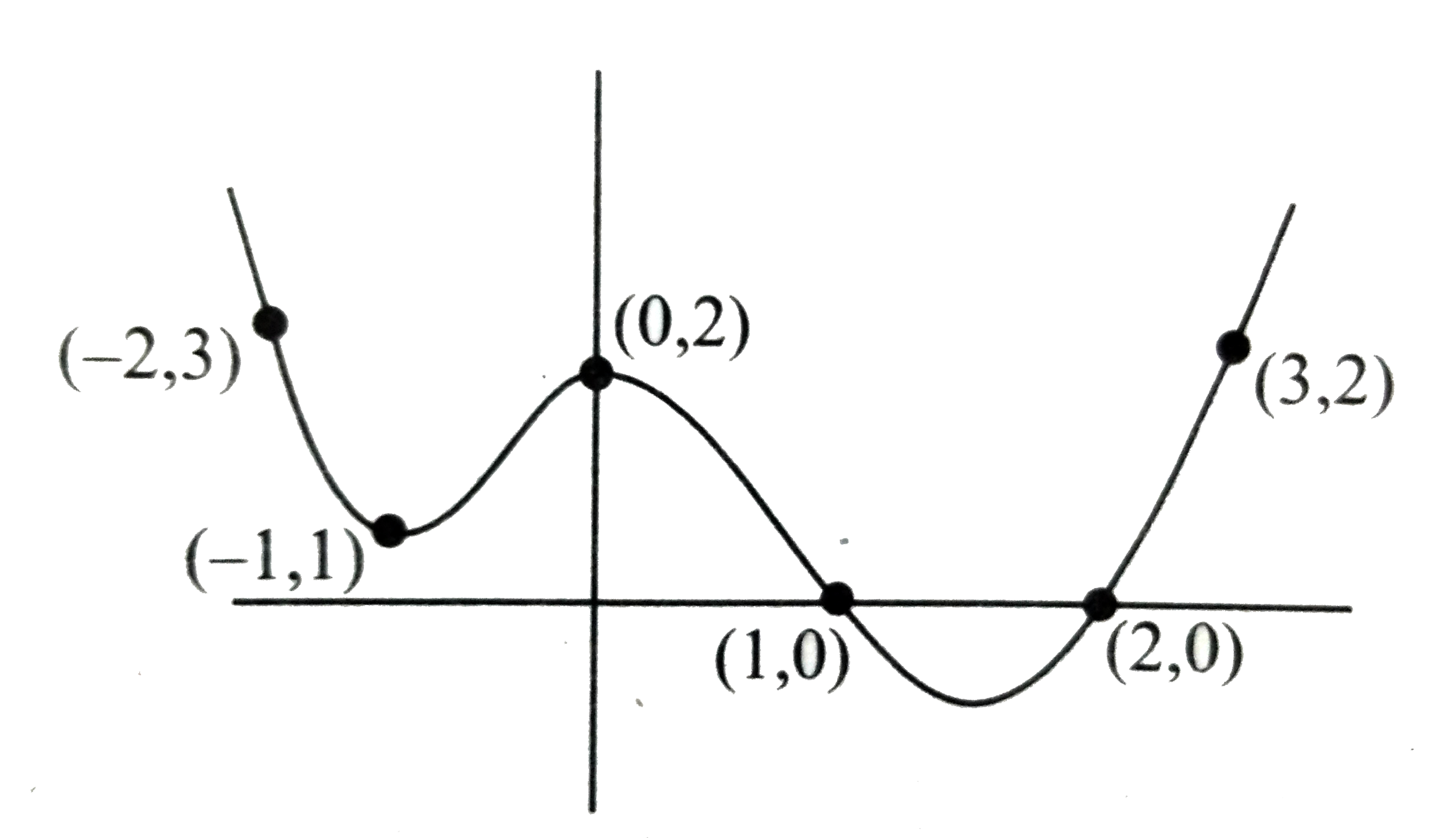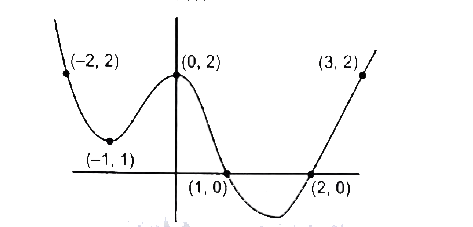In the given figure graph of , is given.

The minimum number of real roots of equation , is
5
7
6
4
The correct Answer is:C
Step by step video & image solution for In the given figure graph of y = P(x) = ax^(5) + bx^(4) + cx^(3) + dx^(2) + ex + f, is given. The minimum number of real roots of equation (P''(x))^(2) + P'(x).P'''(x) = 0, is by Maths experts to help you in doubts & scoring excellent marks in Class 12 exams.
Topper's Solved these Questions
- BOOK - ARIHANT MATHSCHAPTER - CONTINUITY AND DIFFERENTIABILITYEXERCISE - Exercise For Session 15videos
CONTINUITY AND DIFFERENTIABILITY
- BOOK - ARIHANT MATHSCHAPTER - CONTINUITY AND DIFFERENTIABILITYEXERCISE - Exercise For Session 24videos
CONTINUITY AND DIFFERENTIABILITY
- BOOK - ARIHANT MATHSCHAPTER - COMPLEX NUMBERSEXERCISE - Exercise (Questions Asked In Previous 13 Years Exam)43videos
COMPLEX NUMBERS
- BOOK - ARIHANT MATHSCHAPTER - COORDINATE SYSTEM AND COORDINATES EXERCISE - Exercise (Questions Asked In Previous 13 Years Exam)7videos
COORDINATE SYSTEM AND COORDINATES
Similar Questions
Knowledge Check
- Question 1 - Select One
The graph of y = p(x) is given in the figure. The number of zeros of p (x) are:
 AoneBthreeCzeroDtwo
AoneBthreeCzeroDtwo - Question 2 - Select One
Let f(x)=ax5+bx4+cx3+dx2+ex, where a,b,c,d,e in R and f(x)=0 has a positive root. α. Then,
Af'(x)=0 has a root α1 such that 0≤α1≤α0Bf'(x)=0 has at leat one real rootCf'(x)=0 has at least two real rootsDall of the above - Question 3 - Select One
Given P(x) =x4+ax3+bx2+cx+d such that x=0 is the only real root of P'(x) =0 . If P(-1) < P(1), then in the interval [−1,1]
AP(-1) is the minimum and P(1) is the maximum of PBP(-1) is not minimum but P (1)is the maximum of PCP(-1) is the minimum and P(1) is not the maximum of PDneither P(-1) is the minimum nor P(1) is the maximum of P
In the given figure graph of y=p(x)=x4+ax3+bx2+cx+d is given

The product of all imaginery roots of p(x)=(0) isView SolutionLet P be the product of the non-real roots of equation x4−4x3+6x2−4x=2008, then value of P is
View SolutionIf P(x)=x4+ax3+bx2+cx+d,P(1)=P2=P(3)=0 then find P(4)
View SolutionGiven P(x) =x4+ax3+bx2+cx+d such that x=0 is the only real root of P'(x) =0 . If P(-1) lt P(1),then∈the∫erval[-1,1]
View SolutionIt is given that the roots of the equaion x2−4x−log3P=0 are real. For this. The minimum value of P is :
View Solution


